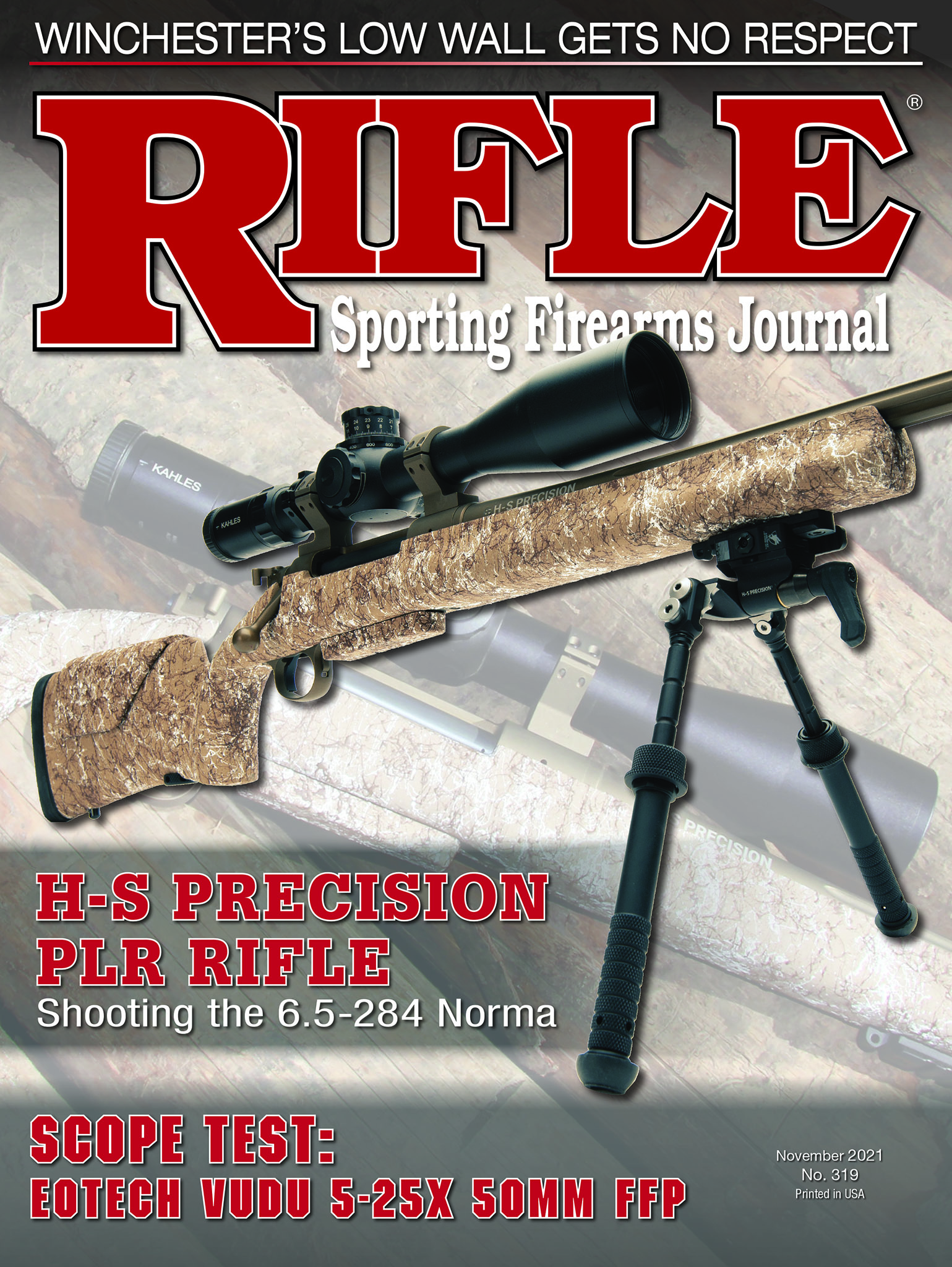Light Gunsmithing
An Interesting Open Sight
column By: Gil Sengel | November, 21
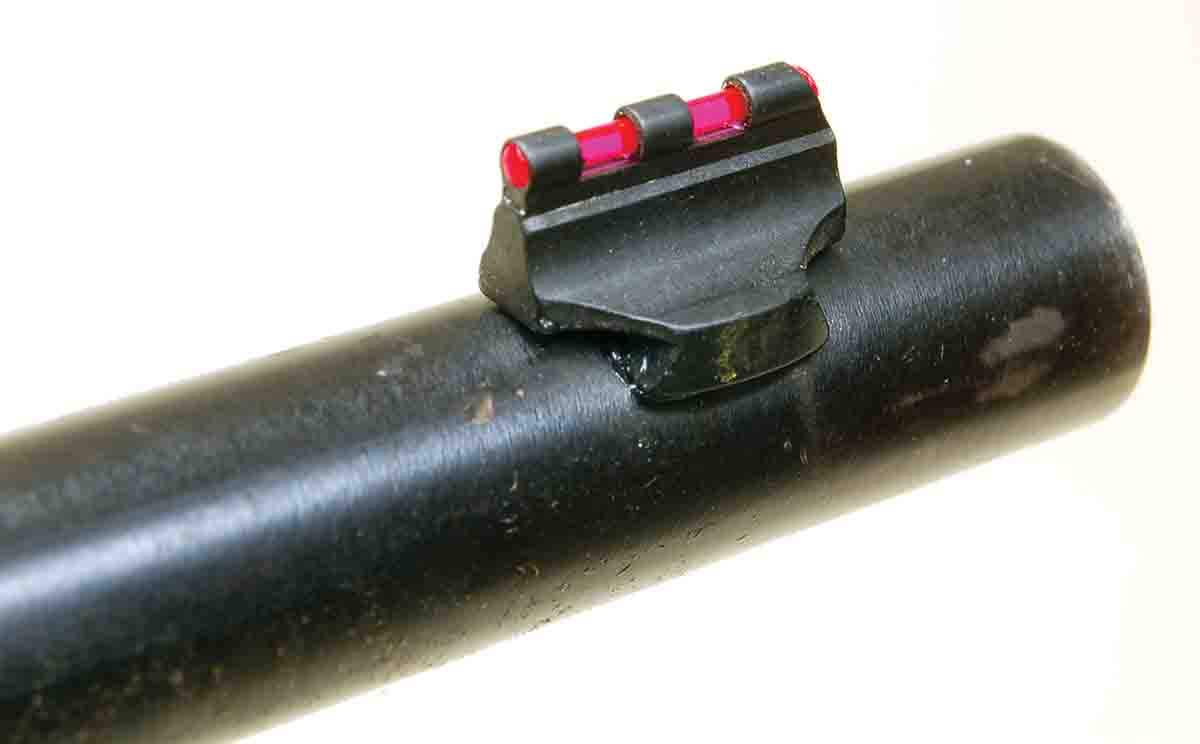
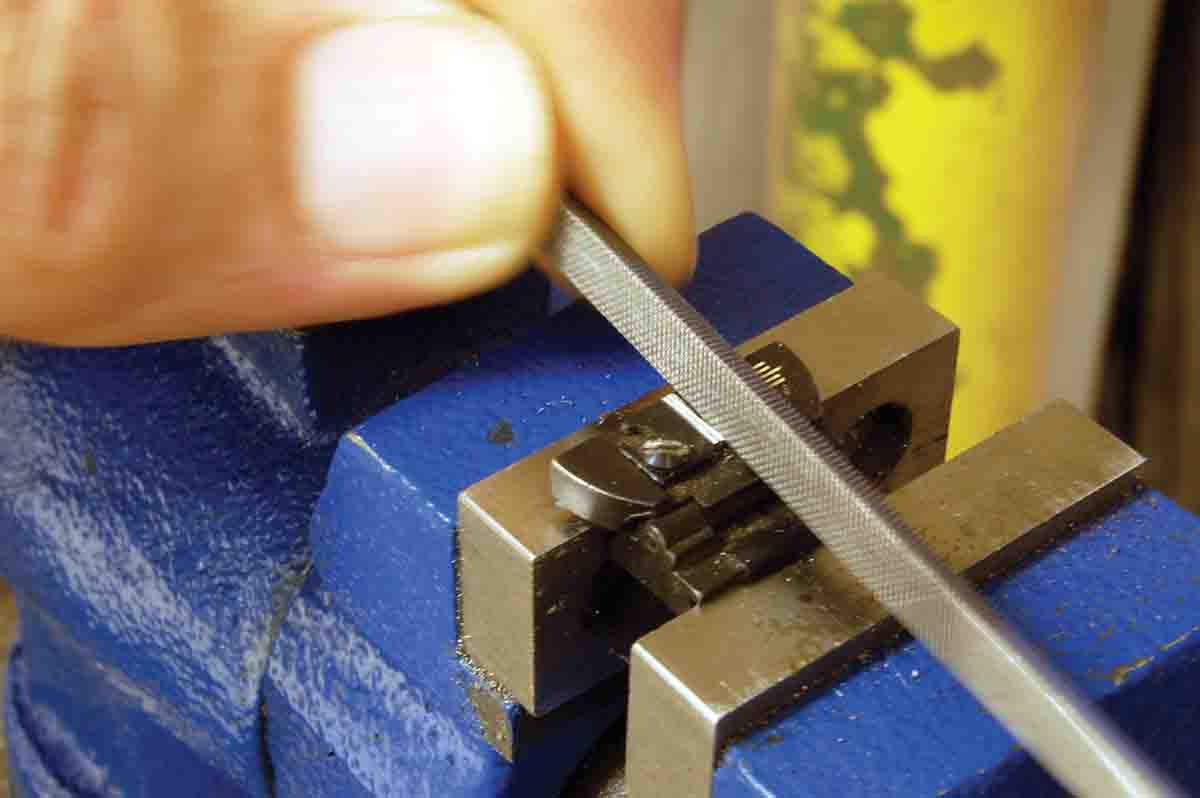
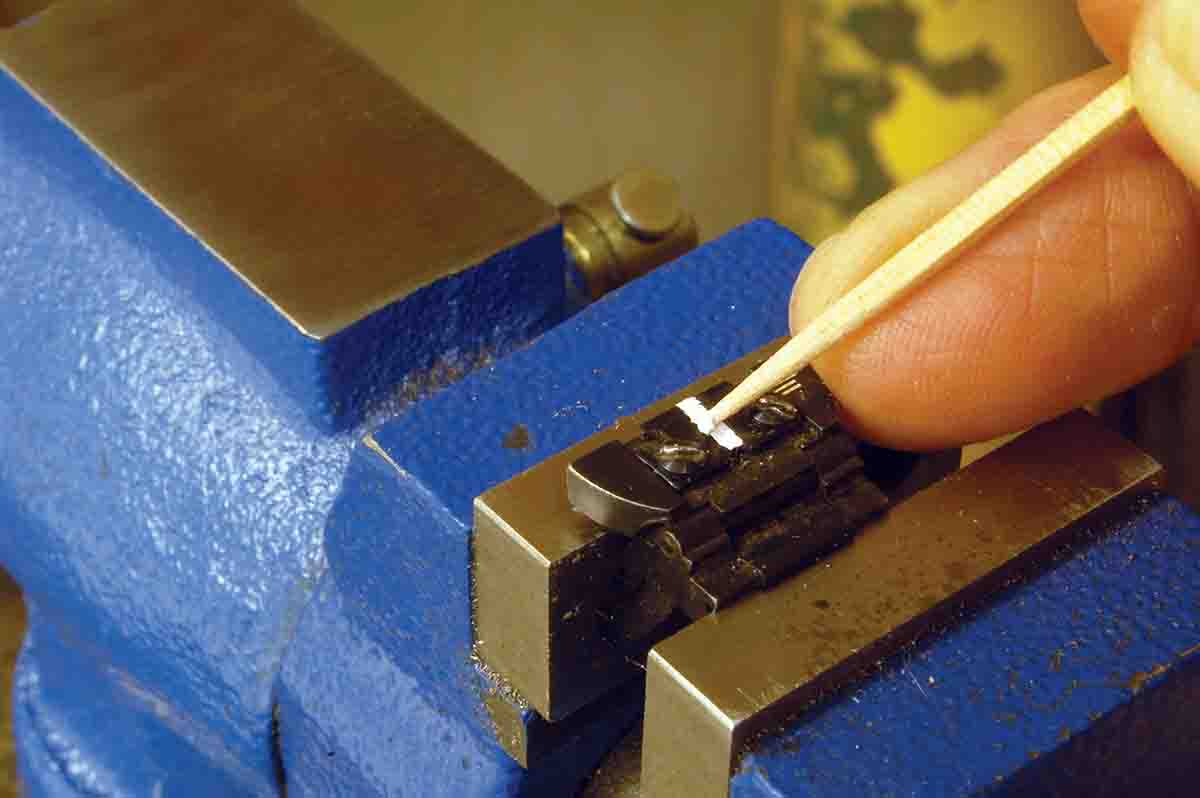
Anyone having normal eyesight and much experience hunting with powerful handguns will admit that optics are not needed to kill hogs, white-tailed deer, or even elk, at the 50- to 100-yard ranges at which such guns are effective. The same is true for rifles used on deer and black bear in timbered areas, where shots over 140 yards are seldom possible. Ditto for a shotgun used to kill turkeys at 40 yards. All it takes is open sights that can be seen against a dark, cluttered background.

Having lived in the Southwest for the past 50 years, one gets used to the sunny days. For those who wish to use them, ordinary open sights work fine. Even rear sights having small apertures are quick to use in the bright sunlight. Therefore, there is no demand for more effective open sights in my part of the country. Then, during the fall hunting season of the year before the COVID-19 virus was turned loose upon us, a friend was invited by a relative to hunt deer in the Northeast part of the country. What better reason to visit family than to go hunting! He was told to be sure to bring rain gear.
After returning home, the fellow said he had never been in a place where it rained so often, or that trees were so black and so close together! His scope-sighted rifle was of little use. The tag was filled using a borrowed, iron-sighted lever gun. Coming to grips with the horrifying fact that there was a type of hunting for which he did not own a suitable rifle, the problem was quickly solved. Yet, there was still a question of adequate sights. The blued, steel factory sights on the borrowed lever-action rifle were usable, but quite dark and far from ideal. Optics weren’t wanted because of the rain.
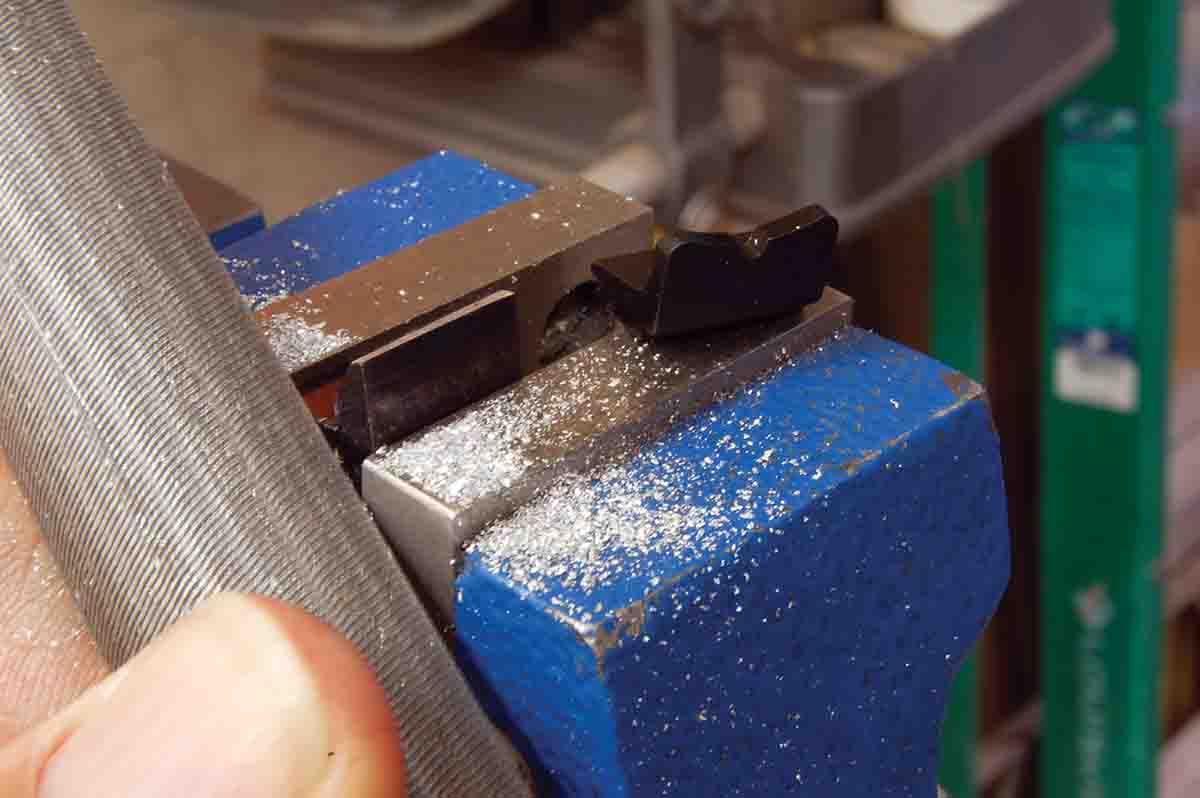
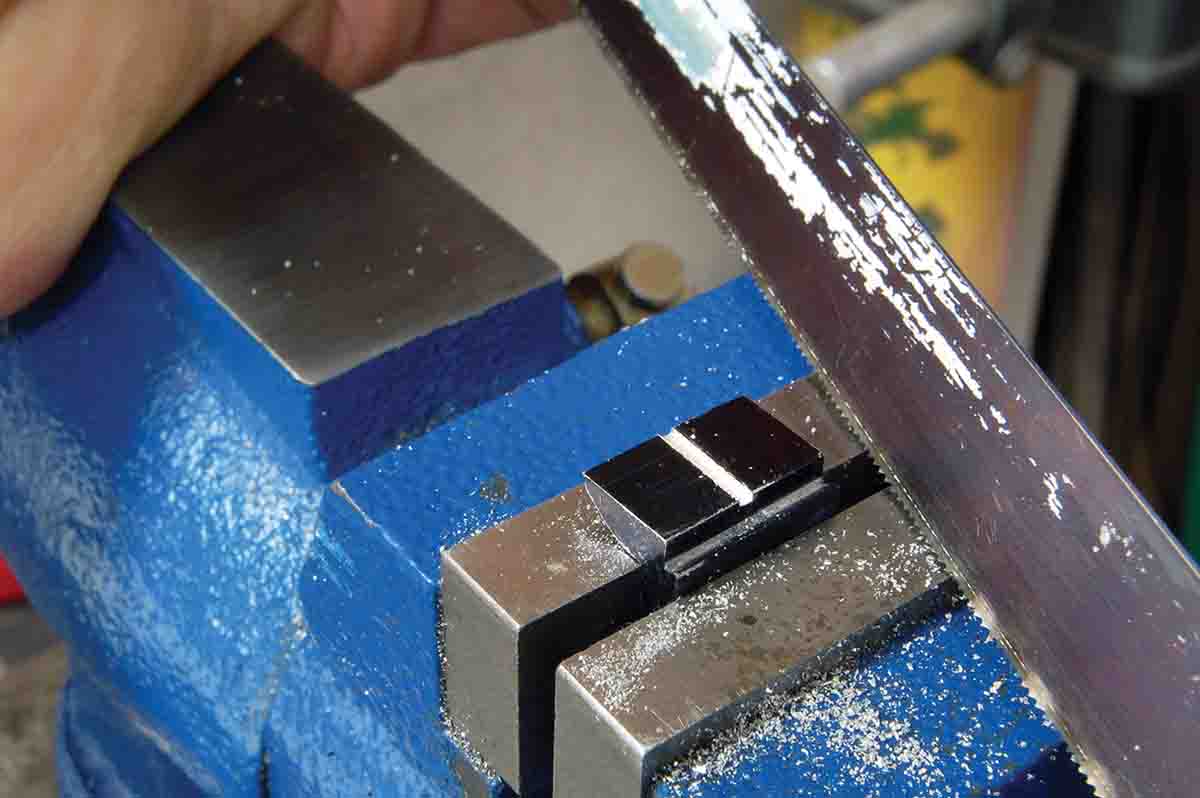
There was, however, a local chap who installed open sights on suitable guns. A low ramp was soldered at the muzzle with a red plastic shotgun bead attached. A low, dovetailed ramp was soldered back near the receiver. In the dovetail was a Lyman No. 16 folding leaf sight. Its elevation plate was replaced with one that was flat on top (no U-notch) and having a vertical white line down the center – certainly a takeoff of the British express sight, which had a platinum line in the center. The new sight was far more visible.
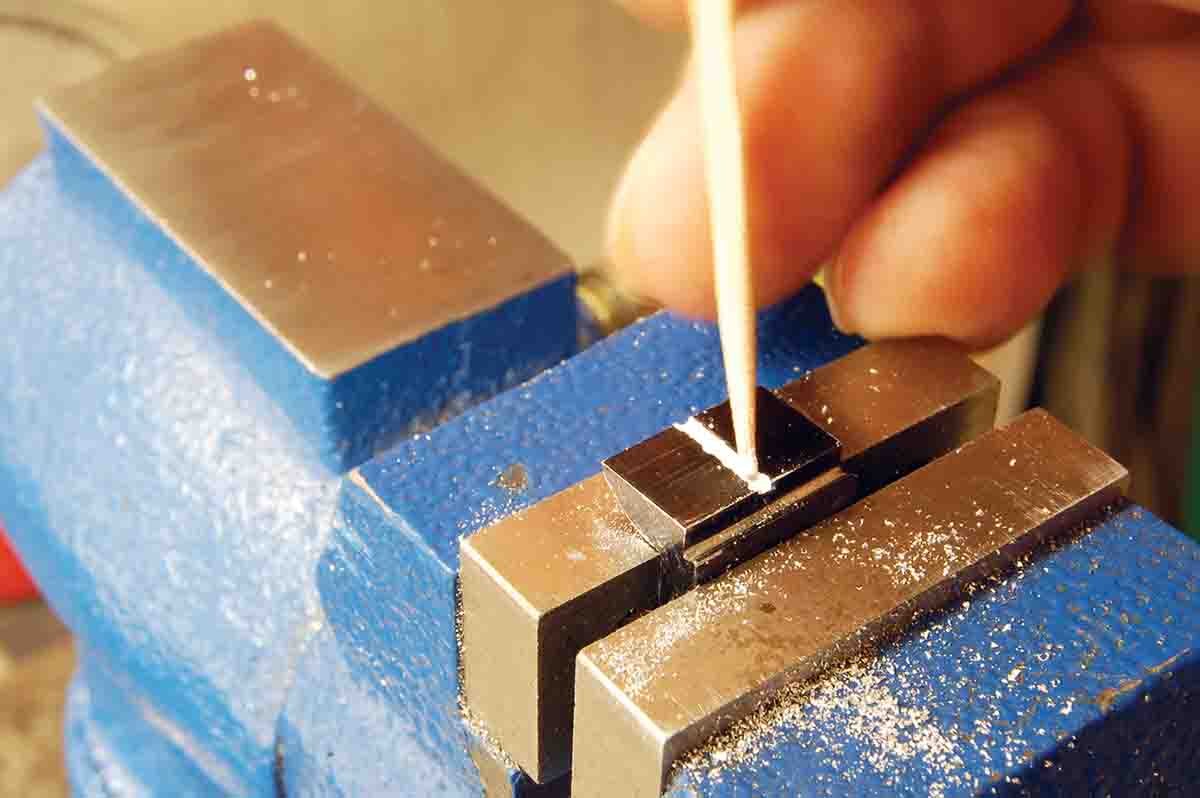
Sight picture required placing the red bead on top of the white line like a lollipop. Windage and elevation adjustments were in the rear sight. With the rear sight folded down, the gun was used like a normal shotgun. It worked!
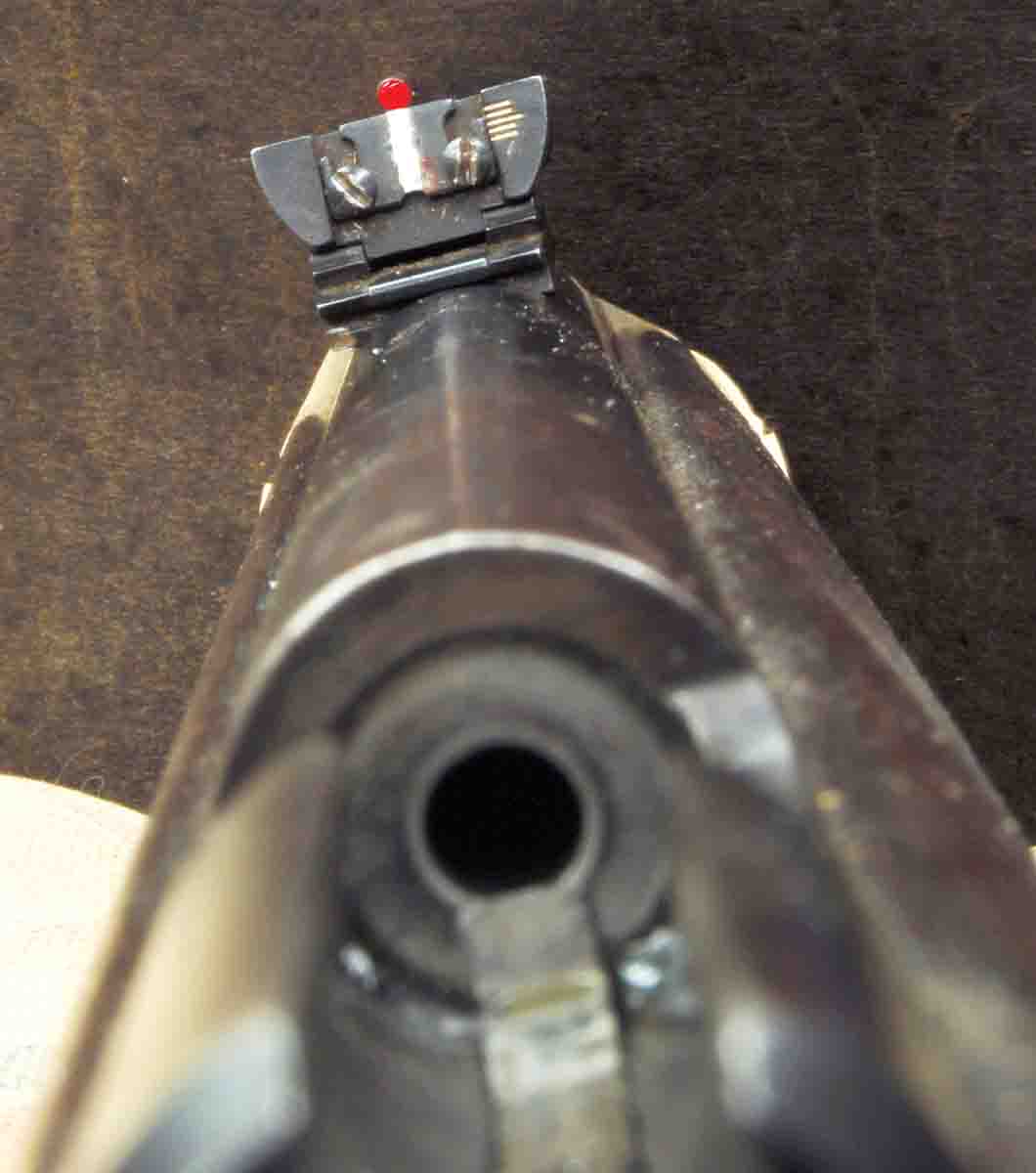
For a rear sight, Lyman folding leaf-types are fairly common in parts boxes at gun shows. At least three heights are available, so just match what is on the rifle. I don’t believe these are available new anymore, but Ruger has put a copy on 10/22s and Number 1s for years, and shows them on parts lists. Making a new elevation plate is simple and would allow any sight to work. Some of these, however, allow just turning the plate upside down so its flat bottom surface faces up. A vertical line is then deeply scribed or filed in the center and filled with white paint.
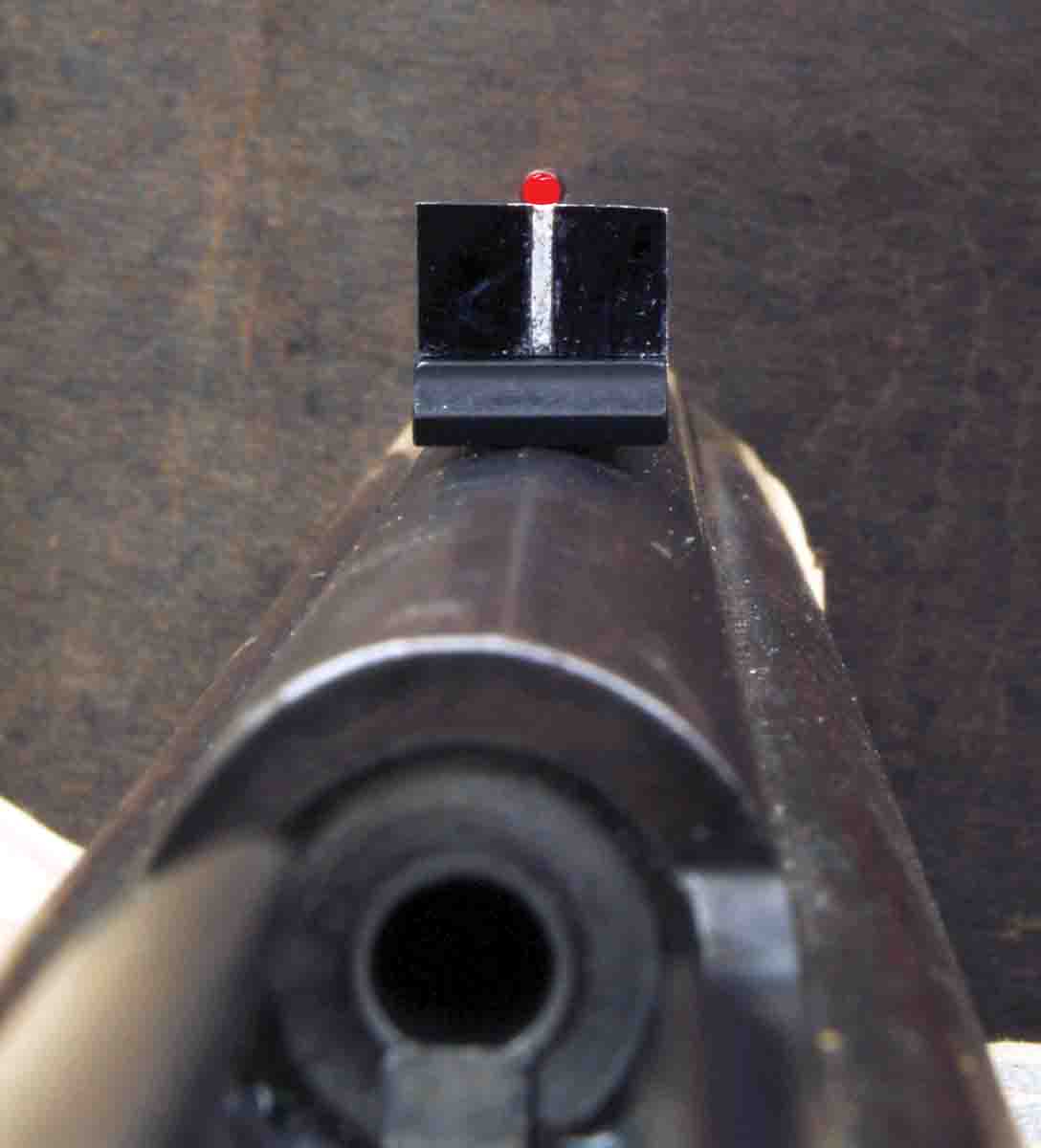
If it is more desirable to just order everything new, WGS offers a non-folding rear sight that is adjustable for both windage and elevation. Interchangeable sight blades make this possible. These come with a U-notch, but since the top must be flat, the tallest available was filed down to sight-in the rifle. The adjustment screw in the sight then fine-tunes elevation. After flattening the top surface, some was filed off the rear to make it stand up squarely instead of leaning back. The vertical line was cut using a 32-tooth hacksaw blade, because this sight is much thicker than the sliding plate of the Lyman model.
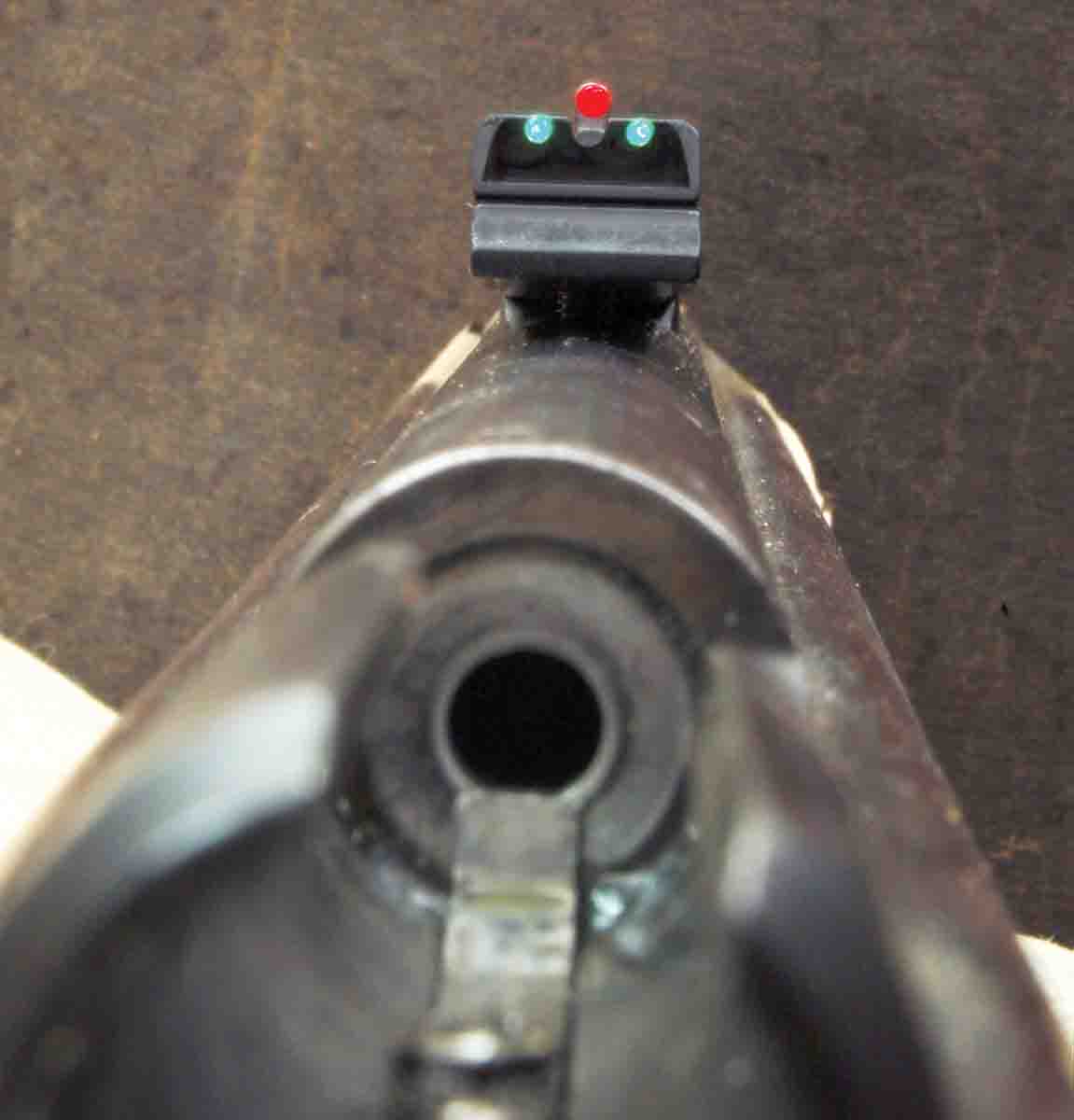
These sights are currently fitted to a .22 Magnum rimfire rifle because one load duplicates the trajectory of the .35 Remington quite well. The rifle is zeroed to hit exactly at the top of the bead at 125 yards. Pop cans are easily hit offhand at 50 to 100 yards; even out to 150 yards, it’s possible to scare ’em most of the time. Shots are also quicker to get off than when using black, factory open sights. Yes, red dots may be better, but then there is the rain factor.
Of interest is that a couple of shooters commented that these sights would be excellent on a big-bore, hunting handgun. Sitting the “lollipop on the stick” provides perfect alignment, preventing a black front post from becoming lost in a black rear notch in poor light. Williams even lists Fire Sights for handguns having removable front posts. Rear sights would have to be modified.
When the U.S. returns to something resembling normalcy, these sights will be installed on a Marlin M336 chambered in .35 Remington. Then, it will be back to the great Northeast to deal with relatives and legions of wet whitetails.


